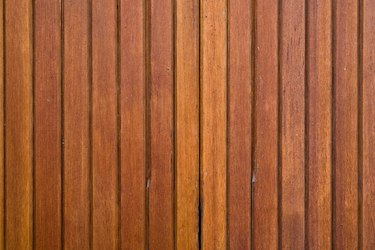
If you are remodeling or finishing your basement, a lot of choices must be made -- one of which is the type of wall paneling that's most practical for the basement. There is no one right paneling for every situation, so you must make the selection based on your specific wants and needs.
Building Code
Video of the Day
Check with your local building and planning office to see what codes you must adhere to when replacing or installing the basement walls. In particular, a minimum insulation requirement is likely necessary on the outer walls of your basement. You should also find out if you need a permit to finish or remodel your basement.
Video of the Day
Types of Panels
Many types of paneling are available for the basement. You can select paneling made from pine, plywood, particle board or foam, to name a few. Some even include insulation. Wood paneling can come with a veneer finish, and thicker panels are of better quality. Some panels also have grooves in them, or they may be veneered with a photographed finish that look like grooves. Determine the difference by touching them. According to Utah State University, the grooves that are clean and straight are of higher quality.
Considerations
When selecting the walls for the basement, consider the fact that, at some point, you are likely going to have moisture issues. It could come from a leak in the upstairs bathtub, a broken washer or moisture seeping through the basement foundation. Choosing mold- and water-resistant paneling is, therefore, important, as is sound-resistant paneling if keeping the sound down is a priority. If you want to install bookshelves, a television and pictures, for instance, sturdy paneling is a must. Cost may also be a factor if you are on a tight budget. You may also be concerned with how easy the paneling is to clean.
Selection
Wall panels that include a hard foam insulation with a cement covering could be the ideal selection for your basement. They are already insulated and have a smooth finish like drywall. They often come with a warranty against mold and moisture problems. They are also thick and durable so you can safely install or hang heavy objects. On the other hand, wood paneling with a veneer finish and hardboard backing is likely your least expensive option. If the veneer is vinyl, this will be among the easiest types of paneling to clean. When hanging objects, find a stud, as this type of paneling is often too thin. Paneling with a soft covering on the outside helps absorb sound; you can absorb sound through floor underlayments, plush furniture and carpeting, as well. If you want a classic basement look, real wood paneling may be a suitable choice. It is durable, as well, so you can hang heavy objects.